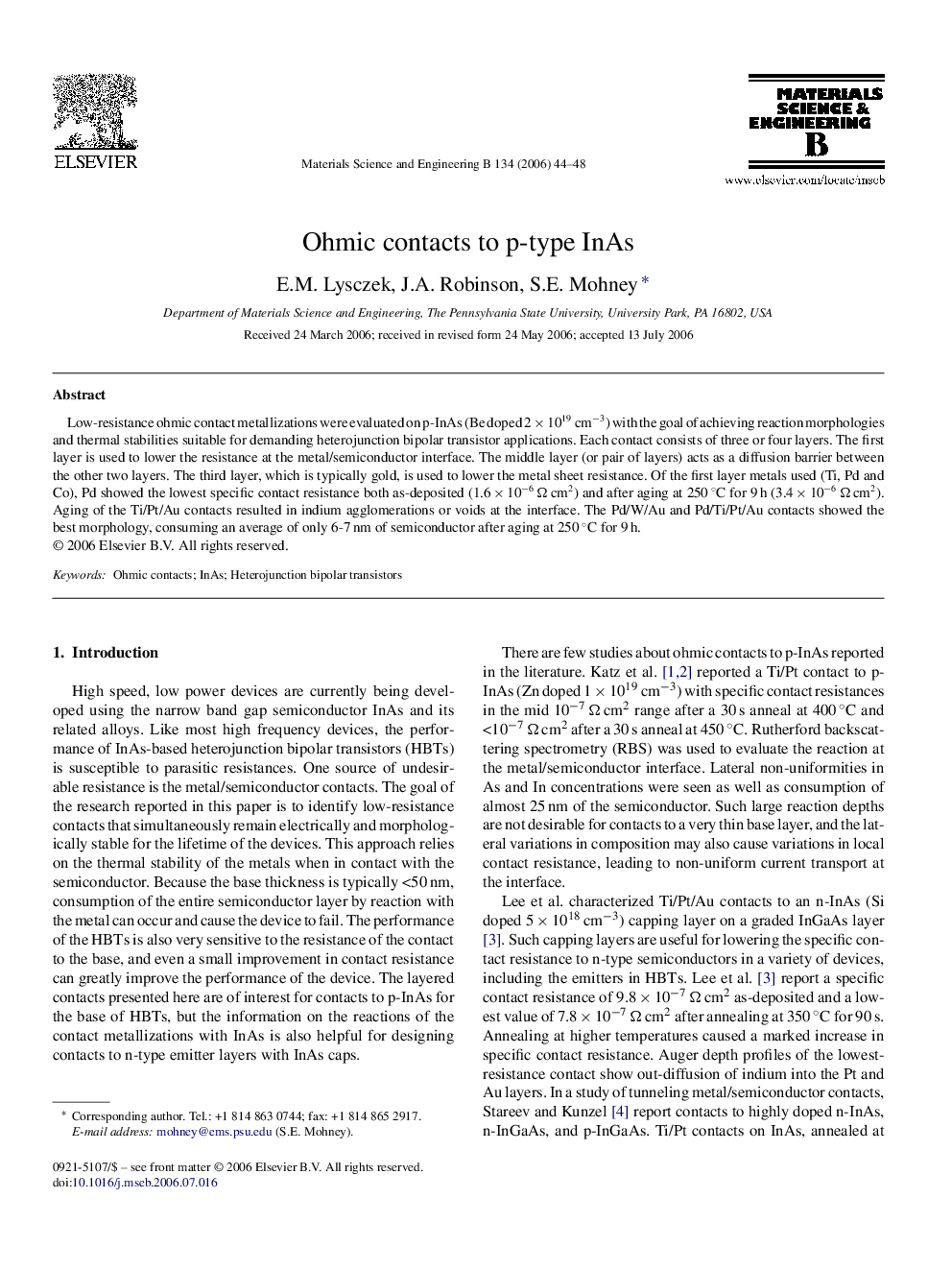| Article ID | Journal | Published Year | Pages | File Type |
|---|---|---|---|---|
| 1531765 | Materials Science and Engineering: B | 2006 | 5 Pages |
Low-resistance ohmic contact metallizations were evaluated on p-InAs (Be doped 2 × 1019 cm−3) with the goal of achieving reaction morphologies and thermal stabilities suitable for demanding heterojunction bipolar transistor applications. Each contact consists of three or four layers. The first layer is used to lower the resistance at the metal/semiconductor interface. The middle layer (or pair of layers) acts as a diffusion barrier between the other two layers. The third layer, which is typically gold, is used to lower the metal sheet resistance. Of the first layer metals used (Ti, Pd and Co), Pd showed the lowest specific contact resistance both as-deposited (1.6 × 10−6 Ω cm2) and after aging at 250 °C for 9 h (3.4 × 10−6 Ω cm2). Aging of the Ti/Pt/Au contacts resulted in indium agglomerations or voids at the interface. The Pd/W/Au and Pd/Ti/Pt/Au contacts showed the best morphology, consuming an average of only 6-7 nm of semiconductor after aging at 250 °C for 9 h.
